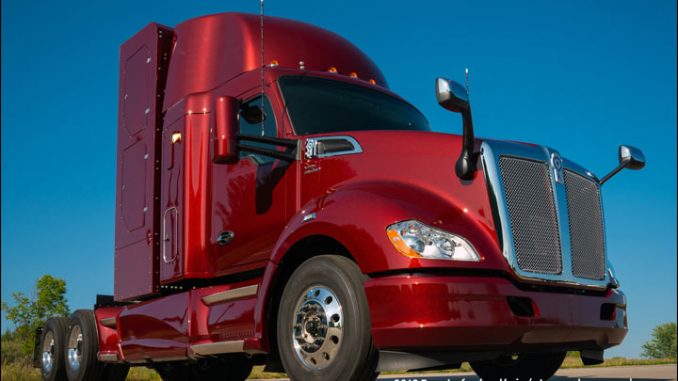
It’s always interesting to see how writing about cars focuses most on the vehicles that matter least. A car like the Corvette or Maserati GranTurismo will attract acres of verbiage, while the cars that people buy by the hundred-thousand, like the Corolla and Cruze get little attention at all.
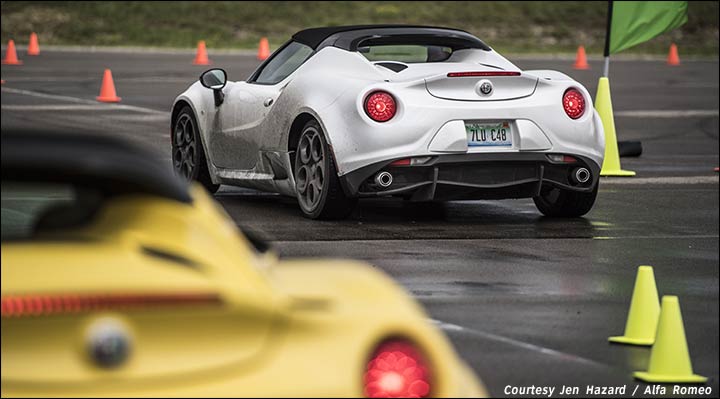 This is what most people want to see, even if they drive home in a Yaris
This is what most people want to see, even if they drive home in a Yaris
For many years, it worked the same way for fuel economy and emissions; vehicles that used very little fuel such as those same Corollas and Cruzes, were subject to tougher rules and regs than big pickups, and those big pickups faced tougher rules than Class 8 trucks — the “big rigs” that rack up miles constantly while a typical car or pickup sits in parking spaces.
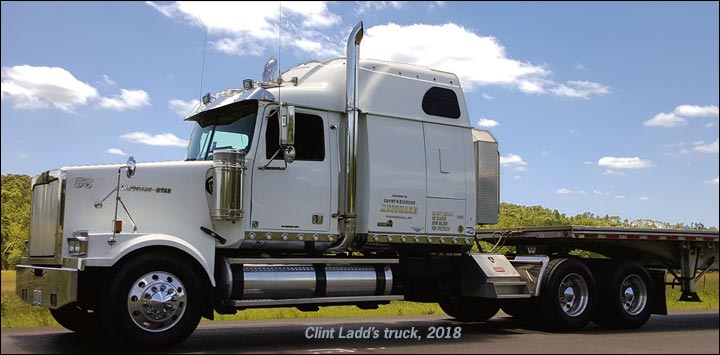
Three big changes have come about for the big rigs. First, Congress and President Obama decided that perhaps they should spew out less pollution, given strong evidence that diesel particulates are carcinogenic and that various exhaust gases cause other problems from asthma to global warming (still a controversial finding among the American public, but long conceded by American oil companies and most of the world). Thus, a series of new rules came into effect, sending at least one company which out of the on-the-road diesel engine business. Whether the response to these rules was sensible or not is another story.
The trucking industry had three responses to tougher pollution rules. One was making their engines cleaner, in ways that backfired on ordinary truckers. Another response was producing brand new trucks without powertrains, since famed EPA chief Scott Pruitt said it would be OK to make unlimited numbers of new trucks with used powertrains from old ones, bypassing the rules. When Pruitt finally resigned after numerous scandals about abuse of government funds for his personal gain, Andrew Wheeler, the acting head of the EPA (and a Bush appointee), said he would shut down that loophole. That may or may not last, but there’s a third response: alternative powertrains.
Pretty much all Class 8 rigs are diesels now, but half a century ago, diesel and gasoline competed. Now, hydrogen fuel cells and electric motors are in the mix, too. Electricity isn’t workable for long-haul trucking, but fuel cells might be.
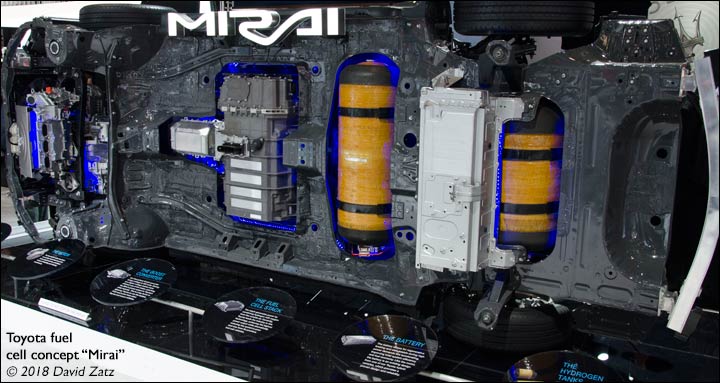
The main proponent of hydrogen is Toyota, whose Mirai car (which you can actually buy) is shown above. They showed off their second-generation hydrogen-powered fuel cell tractor, which they call “Project Portal 2.0,” yesterday; it has a 300 mile range each time it’s filled. Their first attempt, with a 200 mile range, was tested for around 10,000 miles; the second one enters testing later this year, so it’s not going to be sold to regular people for quite some time.
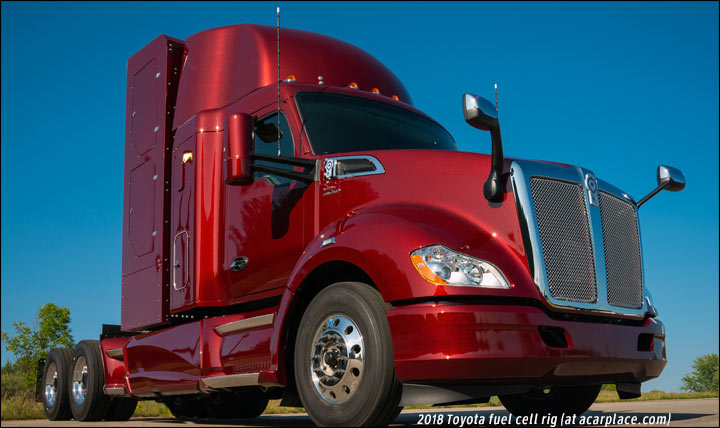
The company quoted 670 horsepower and 1,325 pound-feet of torque, from dual fuel cell stacks and a 12 kilowatt-hour battery; it’s capable of 80,000 pounds (gross combined weight). Toyota itself will be the primary user at first, since it wants to end carbon dioxide emissions from its California port operations with the next four decades. Toyota claimed that 43,000 trucks are already used in American ports, and more are expected to join the fleet.
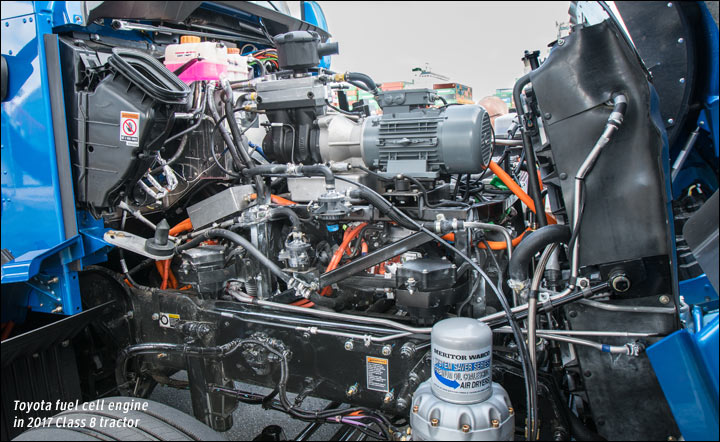
Then there’s the technology more people expect to work, albeit for short-haul only — electric power. Cummins, best known for its diesels, makes the best-selling engine in America for Class 8 trucks — the X15, which enjoys a 38% market share. The company has been able to increase fuel economy by up to 12% since 2016 (for the 485-500hp range), and 20% since 2012. Cummins is hedging its bets, though; they also make natural gas powered engines and are working on electric drivetrains. Last year, they showed off battery-powered buses, made as part of a joint venture; and also showed its first off-highway electric powertrains for cranes, excavators, and loaders.
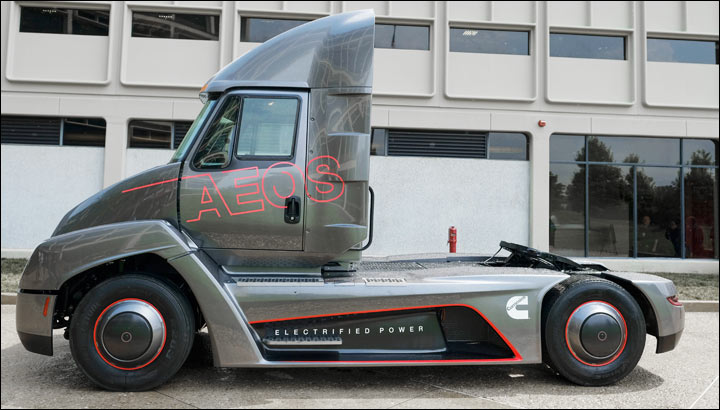
Back in July, when Cummins bought Efficient Drivetrains, Inc (EDI), which makes hybrid and electric power solutions, they had already shown off their own electrically powered Class 7 powertrain — the world’s first electric heavy-duty truck and powertrain. That truck could have an engine-generator option for extended range. Fully electric trucks will likely take a few years to become practical; we’re most likely to start with short-haul plug-in hybrids and move on from there.
Standing over all this is the prospect of self-driving trucks, an ideal loved by the industry but likely to dramatically disrupt the American economy and destroy small towns from coast to coast. Trucking is the #1 occupation of numerous towns, with no fewer than 3.5 million professional truck drivers in the United States in 2016; from 7 to 9 million people work in the field, including non-driving positions. There are many companies working on self-driving, with all sorts of approaches, a field that has mainly garnered new players (though Uber, whose technologies seem to have some fairly major safety problems, just dropped out).
Chances are, changing trucks’ powertrains could make many drivers’ lives easier, but autonomous trucking could devastate the nation’s economy unless major changes are made. Whether Congress and the President are willing to make those changes before autonomous trucking becomes reality — and how long it will take for truck driving to move from man to machine — are questions we can’t answer.

David Zatz has been writing about cars and trucks since the early 1990s, including books on the Dodge Viper, classic Jeeps, and Chrysler minivans. He also writes on organizational development and business at toolpack.com and covers Mac statistics software at macstats.org. David has been quoted by the New York Times, the Daily Telegraph, the Detroit News, and USA Today.

Leave a Reply